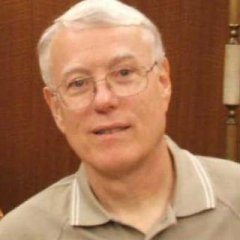When I was a college student one of my history professors would lecture us using a side-by-side slide presentation of the historic places in New England. One side would be pictures from history books and one from what the place looked like today. On the weekends I would visit those sites and imagine how it was back in that time.
Well, you can do that here in Japan. Recently a new museum opened called the Fujisawa Ukiyo-E Museum. It is located 5 minutes from Tsujido station in Fujisawa. When you enter ask for the English brochure.
The museum is about the 53 stations of the Tokaido highway featuring various Ukiyo-e artists reflecting pictures of the stations in and around Fujisawa. It also depicts the local culture and history of the Fujisawa area.
During the Edo Period (1615-1868), a unique art form developed known as ukiyo-e, or pictures of the floating world, made using woodblock plates. The paintings reflected the activities of their time. Ladies were pictured with the latest clothing and hairstyles, while men were shown performing in plays, reciting poetry, and other activities. The colors were bright and the people portrayed in a positive light. It is said that Van Gogh was influenced by this artistic style. Back in the 2009 I was first introduced to Japanese woodblock paintings at the Gibbs Art Museum in Charleston, South Carolina, where they feature the works of Utagawa Kuniyoshi. It was very interesting to see and understand the history, making it all that more impressive.
Part of the exhibit was a video (Push the blue button for English sub-titles) where they showed a station, temple, and other Fujisawa geographic areas along with what it looks like today. This immediately piqued my interest to go and find those places using a photo of the painting and then imagine what it was like back then. Please note you cannot use flash cameras and the museum uses special lighting to prevent damage to the paintings.
The exhibit area included historic paintings of the resort island Enoshima showing the annual pilgrimage to worship the Goddess Hadaka-Benten. She is one of the three most famous Goddesses in Japan. There were many paintings reflecting other local sites in and around Fujisawa.
Included were tour-guide booklets and board games from the Edo era. The museum is well laid out with a roomy feel to it. They have over 1500 paintings of which only 50 to 60 can be exhibited at one time so you can come back many times and never see the same presentation. They publish a schedule on their web page.
At the end of your tour there is a workshop where you can create an ink print using a block plate similar to those used by the artists. The assistant can show you how they could change colors and create a masterpiece. This currently takes place between 1 and 5 pm daily. Please check the web page or speak to one of the museum personnel concerning current workshops, and available times .
There is also a small library with books and catalogs about Ukiyo art and the Fujisawa area.
Next to the Library is a special panel exhibition space which shows you exactly how to make a traditional woodcut print.
With the multitude of visitors to Enoshima Island this museum makes for a great side trip.
It is located across the street from the Terrace Mall on the seventh floor of the Cocco Terrace Shonan building. This mall is about as close as you can get to what an American mall looks like.
This is another great way to learn about local art, history, customs, and traditions during your stay in Japan. Tsujido Station is approximately 23 minutes from Yokohama using the Tokaido line. The museum entrance is free.































